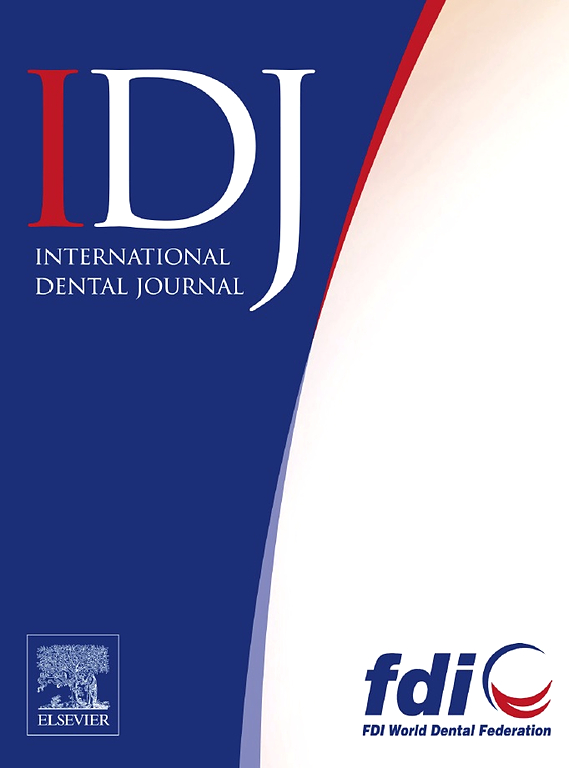复合树脂和银汞合金修复体失效风险:系统回顾和荟萃分析
IF 3.2
3区 医学
Q1 DENTISTRY, ORAL SURGERY & MEDICINE
引用次数: 0
摘要
目的比较银汞合金与复合树脂材料修复后恒牙的失效风险。材料和方法研究资格要求包括临床试验和随访至少12个月的观察性研究。仅包括1990年以后的英语研究。本综述遵循Cochrane干预措施系统评价手册和系统评价和荟萃分析首选报告项目(PRISMA)指南。我们的搜索策略包括使用以下数据库:PubMed、Cochrane和谷歌Scholar。主要结局是修复体失败,定义为修复体置换、牙齿和修复体骨折、继发性龋齿、术后敏感和牙痛。我们进行了随机效应荟萃分析,以确定纳入研究的风险比(RR),并评估了发表偏倚。采用Cochrane偏倚风险工具评价临床试验的质量,采用Newcastle-Ottawa量表评价其他研究的质量。结果结果来源于13项研究。银汞合金修复体的破坏率为0% ~ 50.0%,复合树脂修复体的破坏率为0% ~ 62.7%。meta分析未发现银汞合金和复合树脂修复体失效风险有统计学差异(RR: 0.96, 95%可信区间:0.68-1.34)。Egger’s检验结果未显示meta分析中存在发表偏倚的显著证据(P >;. 05)。结论本综述未发现复合树脂与汞合金修复体的RR差异有统计学意义。然而,在他们的分析中,这13项研究使用了不同的失败定义,并且没有考虑到一些可能影响修复失败的重要因素。未来的审查需要考虑其他导致恢复失败的有影响的变量。本文章由计算机程序翻译,如有差异,请以英文原文为准。
Failure Risk of Composite Resin and Amalgam Restorations: A Systematic Review and Meta-Analysis
Objective
This systematic review and meta-analysis were conducted to compare the failure risk between amalgam and composite resin materials in permanent posterior teeth.
Material and methods
Study eligibility requirements included clinical trials and observational studies with at least 12 months of follow-up. English-language studies from 1990 onwards were the only studies included. This review follows the Cochrane Handbook for Systematic Reviews of Interventions and the guidelines of the Preferred Reporting Items for Systematic Reviews and Meta-Analyses (PRISMA). Our search strategy included using the following databases: PubMed, Cochrane, and Google Scholar. The primary outcome was restoration failures, defined as restoration replacements, tooth and restoration fractures, secondary caries, postoperative sensitivity, and toothaches. We conducted a random-effects meta-analysis to determine the risk ratio (RR) of the included studies, and publication bias was assessed. The Cochrane Risk of Bias tool was employed to evaluate the quality of the clinical trials, while the Newcastle–Ottawa scale was used to assess the quality of other studies.
Results
The results were derived from 13 studies. The failure proportion for amalgam ranged from 0% to 50.0%, while that of composite resin restorations ranged from 0% to 62.7%. The meta-analysis did not find any statistically significant difference in failure risk between amalgam and composite resin restorations (RR: 0.96, 95% confidence intervals: 0.68-1.34). The Egger’s test results did not show any significant evidence of publication bias in the meta-analysis (P > .05).
Conclusion
This review did not reveal any statistically significant difference in the RR between composite resin and amalgam restorations. However, in their analyses, the 13 studies used varying definitions of failure and did not account for some important factors that might have influenced restoration failures. Future reviews need to account for other influential variables that contributed to restoration failures.
求助全文
通过发布文献求助,成功后即可免费获取论文全文。
去求助
来源期刊

International dental journal
医学-牙科与口腔外科
CiteScore
4.80
自引率
6.10%
发文量
159
审稿时长
63 days
期刊介绍:
The International Dental Journal features peer-reviewed, scientific articles relevant to international oral health issues, as well as practical, informative articles aimed at clinicians.
 求助内容:
求助内容: 应助结果提醒方式:
应助结果提醒方式:


